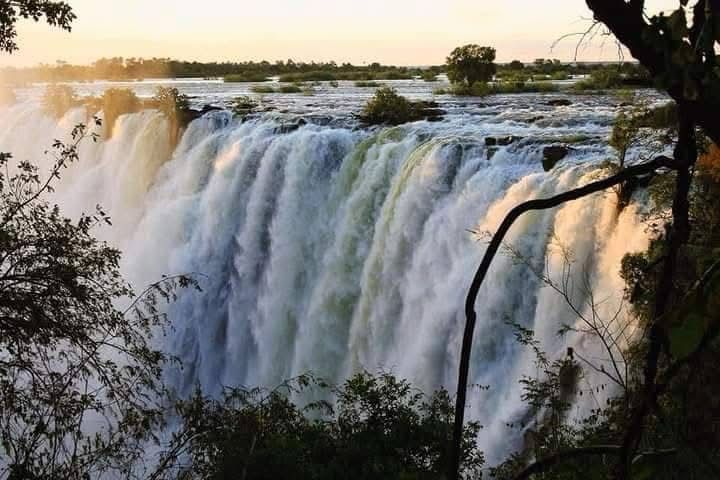Victoria Falls: A Comparison of Zimbabwe and Zambia
Victoria Falls, recognized as one of the most breathtaking natural attractions globally, lies on the border between Zimbabwe and Zambia, each offering distinct experiences.
Victoria Falls in Zimbabwe
• Optimal Viewing: Zimbabwe provides approximately 75% of the waterfall’s face, ensuring the most comprehensive views from Victoria Falls National Park.
• Primary Attractions: Notable viewpoints include Devil’s Cataract, Main Falls, Rainbow Falls, and Danger Point.
• Consistent Water Flow: The falls maintain a steady water flow year-round, making it the preferred location for photography.
• Town and Accessibility: Victoria Falls Town is well-equipped with luxury accommodations, dining options, and convenient access to safaris in Hwange National Park.
Victoria Falls in Zambia
• Intimate Experience: Zambia offers a more personal encounter, with trails that lead visitors close to the edge of the falls, particularly in Mosi-oa-Tunya National Park.
• Devil’s Pool: A key attraction is Devil’s Pool, a natural rock pool situated at the brink of the falls, accessible during the dry season.
• Seasonal Perspectives: During the dry season (August–December), certain areas of the Zambian side may dry up, unveiling remarkable rock formations.
• Livingstone Town: This town is more tranquil compared to its Zimbabwean counterpart and features historical sites such as the Livingstone Museum, along with access to safaris in South Luangwa National Park.
Which Side is Superior?
• For optimal views and photography opportunities, Zimbabwe is the preferred destination.
• For adventurous activities, including Devil’s Pool and Livingstone Island, Zambia is the more suitable option.
• A univisa facilitates easy exploration of both sides.
Here are some intriguing details regarding Victoria Falls:
1. One of the Largest Waterfalls – Victoria Falls ranks among the largest waterfalls globally, measuring approximately 1.7 kilometers (1.1 miles) in width and descending 108 meters (354 feet).
2. Mosi-oa-Tunya – The indigenous Lozi term for the falls is Mosi-oa-Tunya, which translates to “The Smoke That Thunders,” a reference to the substantial mist and the thunderous sound produced.
3. Location – The falls are situated on the Zambezi River, which delineates the boundary between Zambia and Zimbabwe.
4. Discovered by Europeans in 1855 – Scottish explorer David Livingstone was the first European to witness the falls, naming them in honor of Queen Victoria.
5. Massive Water Flow – During the peak flood season, from February to May, approximately 500 million liters (132 million gallons) of water flow over the precipice every minute.
6. UNESCO World Heritage Site – Victoria Falls is designated as a UNESCO World Heritage Site, recognized for its natural splendor and ecological importance.
7. Adventure Hub – The area around the falls provides exhilarating activities such as bungee jumping, white-water rafting, helicopter tours, and the renowned Devil’s Pool, where visitors can swim at the brink of the falls.
8. Natural Border Crossing – The Victoria Falls Bridge links Zambia (Livingstone) and Zimbabwe (Victoria Falls town), offering stunning vistas.
9. Best Time to Visit – The optimal period for experiencing full water flow is from March to May, while the months of August to December are preferable for visibility and adventure activities.
10. Rainforest Ecosystem – The continuous spray from the falls fosters a distinctive rainforest environment, characterized by lush flora and rare plant species.












